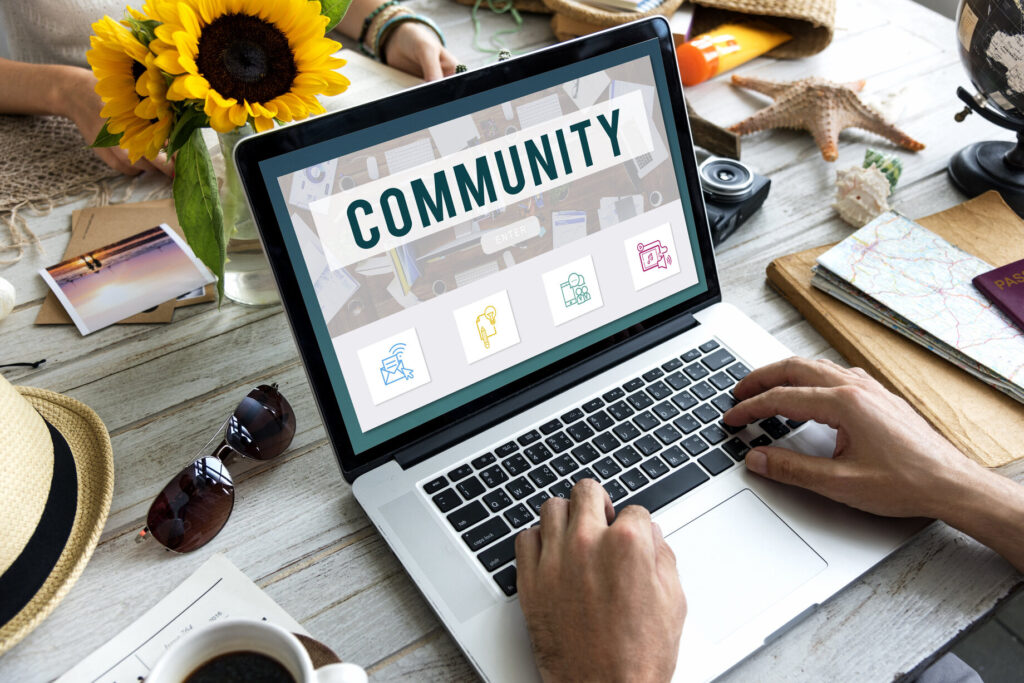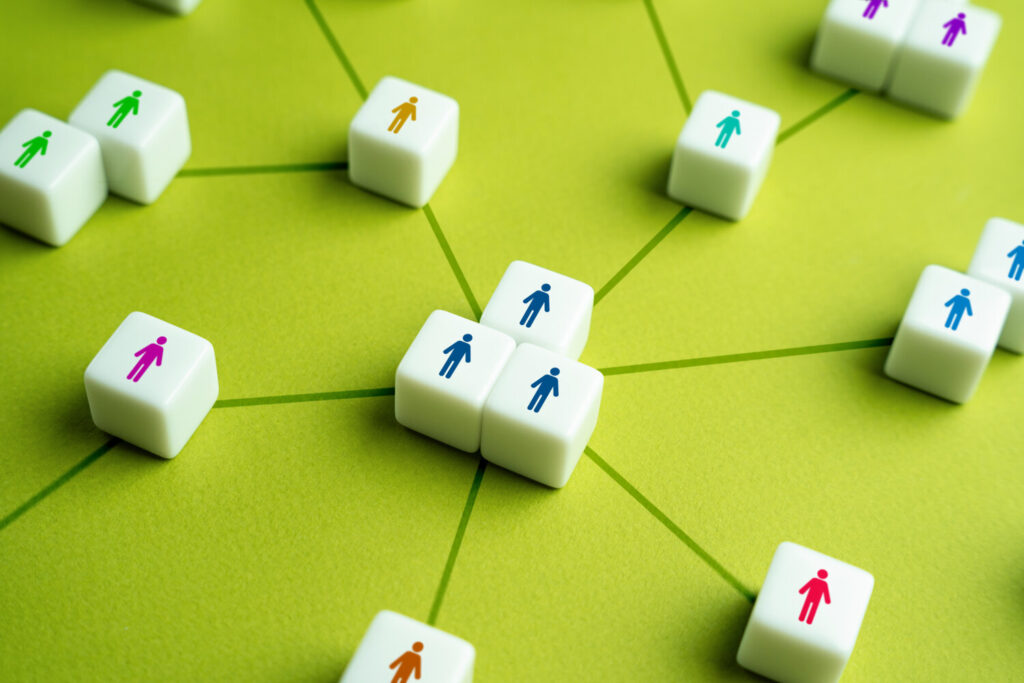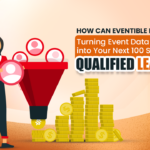
“One of the most vital ways we sustain ourselves is by building communities of resistance, places where we know we are not alone”
– Bell Hooks
People thrive in communities and this aspect is beautifully captured in the quote above by notable American author and activist Bell Hooks. Marketers have long recognized the significance of building communities of potential target audiences as a potent strategy to retain existing customers and attract new ones.
In B2B events, this translates as thriving event communities managed across different event platforms. Nowadays, events are no longer a one-off thing, wherein attendees attend the event and forget about it.
Event marketers have to focus on year-round engagement to maintain an event community. These communities are channels of lead generation, the data from these forums aid in attracting lucrative sponsorships, amplified reach through advocacy, better attendee retention, and higher levels of emotional connection and brand awareness.
While there are many ways to generate leads, community building and engagement has become a popular strategy among event marketers across the globe. Read on to find out how to build a community and achieve year-round engagement to fuel your pipeline.
Why is an Engaged Community the Ultimate Demand-Generation Engine?
We’ve already understood the importance of having an event community. It is a platform where like-minded individuals come together with a unified sense of purpose. From a human psychology standpoint, it gives people a sense of belonging and enables them to learn, thrive and connect.

Event marketers and marketers of B2B and B2C companies have leveraged the benefits of this self-sustaining ecosystem for long-term growth. Myllisa Patterson, VP of Demand Gen at Cvents, describes the relevance and significance of a thriving event community as a pivotal demand generation tool when she said, “ I think demand has really evolved a lot in my twenty something years career and it really relates to community and the core mission here because what we’re trying to do is help people solve problems…we really want to build community and relationships with our customers and prospects and help them achieve their goals.”
Marketers keep organizing miniature virtual and in-person events all year round for their communities. They help them with information, guides, tools, and how-tos to achieve their goals, and provide opportunities for people to connect.
Now to understand why an engaged event community is a demand generation engine, let’s do a comparison of how things are with a community in place vs without.
Having an existing thriving community means you have a steady stream of event attendees you can target from time to time. Your event apps or other platforms like Webex events, Mighty Networks, Localist, and Eventbrite offer platforms where you can effectively manage your event community. In the absence of a community, you’d have to rely on age-old ways of targeting attendees like cold calling, emailers, etc, to your list of clients. However, with a community forum in place, all you have to do is post and engage with your community in an integrated space.
These event community platforms track members’ data, enabling event marketers to get their list of high-potential SQL clients. At Eventible, we check for attendee reviews and their frequency of reviewing a certain category of events. These trends and patterns later translate to SQLs, which can be used by event organizers.
Coming to demand generation, when potential customers see peers, industry experts, and users actively engaging in discussions, sharing success stories, and recommending solutions, they trust those insights far more than ads or cold outreach. Conversations on the event community platforms draw in and nurture leads over time.
Lastly, a community generates more content, which means more engagement, more backlinks, and more boost to SEO without additional ad spend. This in turn leads to a pathway of increased demand generation.
Companies that build and invest in community engagement experience exponential growth, lower acquisition costs, and a pipeline of highly qualified leads, making it one of the most powerful demand-generation strategies today
Understanding the Mechanics of Community Building with a Case Study
Here is a case study elucidating the mechanics of community building and how it can be sustained and converted to potential leads over a period of time.
Overview
In March 2023, AI solutions provider Cognigy hosted its first Customer Experience Summit in Düsseldorf, Germany, bringing together over 200 global customers for a one-day in-person event. The goal was clear: build a community of Cognigy users by facilitating meaningful peer connections and showcasing success stories. “Above all, this event aimed to foster a community among Cognigy customers, facilitating meaningful connections among them,” explains Natalie Atangana, Customer Advocacy Manager at Cognigy.
In addition to customers, key partners and prospects were invited to engage with this user community and the Cognigy brand. This set the stage for an event focused on networking, knowledge-sharing, and interactive engagement around Cognigy’s products. The whole event was hosted by Webex Events, which was formerly known as Socio.
What Kind of Engagement Strategies were Used?
The following engagement strategies were used:
1. Using an Event App to Build the Community
The whole event had a centralized touch point, which was the mobile event app, which allowed attendees to register and connect with others. Cognigy took things to a whole new level by matching the app’s colour theme to the colours on the attendee name badges. This proved to be a roaring success, as according to the Socio Events Website, over 80% app users made connections through the app during the event.
2. Organizing Q & A through the App to Encourage Easy Interaction
Instead of going the traditional route of a microphone-based Q&A, Webex encouraged attendees to submit their questions on the app. This took care of people who would otherwise shy away from the limelight. It also made interaction between attendees and industry experts easier. A moderator would ask the experts questions through the app. Attendees posted over 15 questions per session on an average, making the app-based Q&A session a grand success.
3. Having an Integrated Communication System through the App to Accelerate Community Building
Event organizers released the live agenda, show flow, and all kinds of event-related communication on the app. This enabled attendees to personalize their schedules on the app, thereby providing vital data to event organizers and marketers which would come in handy later. They even uploaded all presentation slides in the app for on-demand access after sessions, giving attendees an incentive to use the app and continue engaging with content post-event.
4. Encouraging Content Co-Creation to Enhance Community Experience
Attendees were encouraged to present on topics of their choice, for which they had to interact with their peers. After presenting sessions, attendees were allowed to ask the presenter questions via the app, thereby encouraging interaction and communication with one another. This not only changed the overall content format wherein only speakers were present but also allowed attendees to be actively engaged in the overall event experience rather than just being a passive audience.
The Cognigy summit case study demonstrates that a well-executed digital platform can transform an event into a vibrant community experience, yielding high satisfaction and valuable connections that extend long after the event concludes.
In effect, the ROI of a highly engaged event community would translate to enhanced brand value, customer loyalty and faster lead generation.
How is True Community Building Different from Audience Acquisition
Now that we have a fair idea of what community building looks like in the event marketing sphere, it is important to distinguish between audience acquisition and community building. Audience acquisition is purely sales-driven from short-term strategies while community building is a relatively long-term effort and has a different approach. Although both aim at promoting the brand and generating leads, the approach and outcome for both strategies are different.
Audience Acquisition | Community Building |
The main aim here is to generate leads and increase reach. | The main aim here is to build long-term relationships with customers and in turn generate leads. |
The nature of engagement here is usually one which is from the brand to the audience | The nature of engagement here is usually peer-to-peer and also from brand to audience. |
The lifespan of an audience acquisition initiative is short-lived and may last a few months or so. | The lifespan of a community building initiative is usually year-round |
Common strategies include paid ads and promotions, SEO and content marketing, cold outreach, and email campaigns | Common strategies include peer-to-peer engagement, user-generated content, year-round interactions, exclusive networking and mentorship, recognition and advocacy, and always-on resources. |
We are not advocating for either but rather it is important to have a clear understanding of the two approaches before arriving at a suitable event marketing strategy. Audience acquisition will generate sales but community building will give you long-term brand loyalists.
The Blueprint for Building a High-Impact Event Community
To further understand the mechanics of building a high-impact event community, it’s necessary to take a methodical approach. Here we have identified the types of communities, the actionables to be undertaken, and the tools to be used. Let’s get started.
1. Defining Your Event Community’s Mission and Value Proposition
Simply setting up a community is not enough; as an event marketer, you have to define your community’s mission and the value proposition you plan to offer your community members. This does not mean that every move on the community forum will be pre-ordained, rather you act as a facilitator in driving the engagement and communication flow on the community forum. To understand this better, let’s focus on what members gain beyond the event itself?
Exclusivity: The whole idea of having a community forum is to make members feel valued and openly recognise and acknowledge their contributions. Your post-event attendees who are not members of the community you have built should have exclusive access to post-event recordings of speaker sessions, industry reports, and Q & A sessions.
Networking: Your event community is essentially the fireplace for networking for your members. You can give this aspect a sense of direction by introducing industry-specific course videos on the forum, and then have peer-to-peer assignments related to the videos.
Upskilling Opportunity: Through course videos you provide valuable content while nurturing networking and professional relationships in the community. Members also benefit from the course videos as they get to upskill. Additionally, you can have certifications, workshops, and mentorship opportunities.
Recognition: You can drive engagement within your event community by having webinars with industry experts who spoke during the event. This can lead to continuity of the session even after the event. Distinguished members within the event community can be recognized for their contributions and given badges of appreciation by calling them event community ambassadors.
This is a fundamental blueprint of any kind of digital community online. These days you find communities on Instagram, LinkedIn, Slack, and also on renowned community portals like Skool.
2. Aligning the Community to Business Goals
Setting up and maintaining the event community is one part of the game. To make the most of this endeavor as an event marketer, it is important to capture high-intent leads through ongoing engagement, strengthen member relationships through exclusive perks like opportunities to speak with industry experts, collect real-time feedback from members, and establish yourself as an industry expert. A notable example is that of Gainsight, a B2B SaaS firm, which built a thriving event community of customer success professionals through its annual Pulse conference series. Starting with just 300 attendees in 2013, Pulse grew to over 4,000 attendees by 2017. The conference built a community of thriving professionals and positioned Gainsight as a thought leader in the industry.
3. Selecting the Right Community Model
There are different types of community models to choose from. The two major categories are open and gated communities. Let’s understand these better and find out which one is suitable for the B2B industry.
i) Open Communities
All public groups come under the category of open communities. Anyone can join these groups without an invitation. Some examples include LinkedIn, Slack, and social media hashtags. These kinds of communities have wider reach, can easily attract new members and have SEO benefits. The downside is that there is no exclusivity and there is susceptibility to spam.
ii) Closed Communities
All communities which are member-only and require an invite or permission to join are gated communities. Some examples of this include private forums, member-only platforms, and exclusive Slack channels. These communities have higher engagement, curated conversations, and exclusive value. However, these communities need constant moderation and steady inflow of quality content.
Depending on your overarching business goals, you can opt for either of the above types of communities. Although we recommend closed communities to achieve high-intent leads, as only dedicated members would join closed communities.
4. Leveraging Technology For Event Community Growth
We have already briefly discussed the event platforms for setting up the community. Here we get into the details of leveraging technology to foster community engagement and growth.
i) Event Platforms
Some of the commonly used event platforms are Webex Events (Socio), Eventbrite, and Hopin.
ii) CRM
Some of the commonly used platforms are Zoho CRM, Hubspot, and Salesforce. These tools help with member tracking and understanding potential leads within the community.
iii) Content & Automation Tools
Some of the most commonly used tools are:
- HubSpot Email Automation – Personalized nurture campaigns.
- Zapier – Connects apps & automates workflows.
- Notion/AirTable – Organizes content, session recaps, and discussions.
Monetizing and Pipeline Acceleration through Community
We just understood how to set up a community and the tools required to do the same. Now let’s focus on how a properly engaged event community can lead to higher SQLs and pipeline acceleration.

1. Identifying Buying Signals Within Your Community
You may have a thriving event community, however, not everyone is a potential lead. So, how do you identify what kind of engagement behaviours would translate to high-intent prospects? To begin with, as an event marketer, you should consider every interaction on your platform as a data point. Note members who regularly attend webinars or virtual events, ask detailed product questions, or download resources. Choose an event community platform that will help you track this data. Carefully analyse this data and observe early intent cues. Just the way you would track website or email analytics, track your community engagement data.
At Eventible, our reviewers give us enough information in the form of reviews to help us understand the overall sentiment about an event. You can leverage social listening and sentiment analysis to enrich your lead scoring. Social listening is closely observing conversations and tone to understand who is ready for a sales conversation.
2. Strategic Touchpoints from Engagement to Conversion
Now that you have learned to identify engagement patterns, let’s understand how to convert this to potential leads. The key is a seamless lead handoff from event community to sales that seems helpful but not forced. You don’t want to come across as a desperate salesperson but rather a helpful guide who is helping their customer with their pain points.
The more you can meet the customer where they are with relevant context, the smoother the transition. To do this, you need to design strategic touchpoints that gently steer engaged members towards a purchase, in case of events, it is getting a community member to register for it. And if you have sponsor partnerships, this could also double as a lead generation vehicle for them.
To gently nudge your high-intent leads, you can invite them to your community-driven sales funnel with tailored content or offers. For example, if someone has been active in discussions about a specific problem, you could invite them to an exclusive webinar or send a how-to guide that addresses that exact challenge.
You could also set up a VIP demo or consultation for community members who hit certain engagement milestones. This will make the event community members feel valuable insiders, and they will actively engage with you and your offering to continue to feel that way. So, make the most of exclusive offers and VIP perks as they can be conversion catalysts. Some potent examples of VIP touchpoints include early access passes to your next big event, priority registrations for new features or programs, or a members-only Q & A session with a keynote speaker or executive. When community members feel valued and appreciated, they are far more likely to be successful lead conversions.
Key Takeaway: Why Always-On Communities Will Always Win?
Unlike the traditional format where events are seen as standalone components, communities create a constant cycle of engagement and conversion. They allow event marketers to stay in touch with their event community members all year round and not just during event season. As an event marketer, you get to nurture leads through conversations on community forums and peer-driven learning. You get to fish out high-intent prospects based on their engagement behaviors and strengthen overall customer loyalty by keeping them engaged beyond a single touchpoint.
By making the shift from traditional marketing to community-driven engagement, you turn your event audience into a thriving ecosystem—one that not only engages but drives demand, conversions, and long-term loyalty.




Comments are closed.